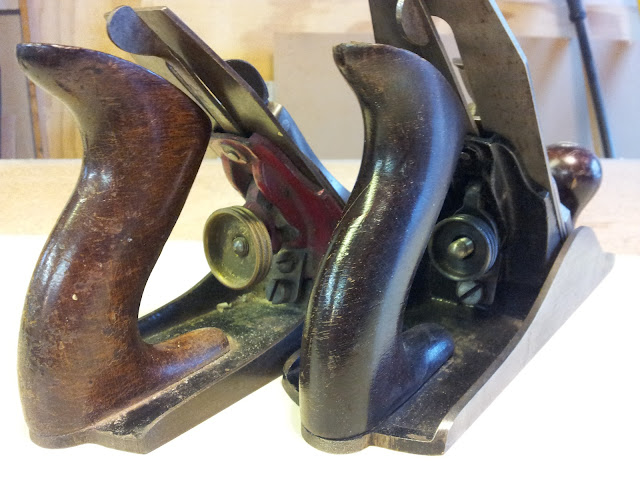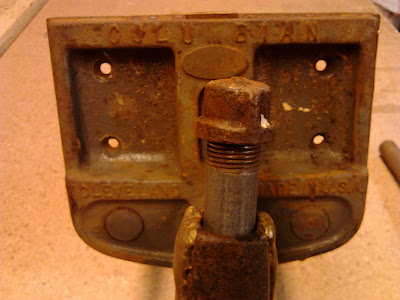I got some great news this week about a grant proposal I wrote for the Duluth Audubon. The DNR decide it was worth funding. It is approximately $13,000 to start restoring a section of forest here in Duluth, along the Kingsbury Creek. This is such an exciting opportunity for the DAS to get involved in some "on the ground" work in conservation and for myself as an aspiring grant writer. The project is going to be a lot of work but I think I assembled a great team of collaborators that will make it go smoothly. I will go into more detail and post lots of updates here as the project progresses. Right now I'm just waiting for more info from the DNR about the next step. Here's the grant narrative to give an idea of what's going on.
PROBLEM STATEMENT
The presences
of appropriate native forests on hillsides and along drainages help to perform
a myriad of ecosystem services. These services include improving water quality,
supporting wildlife habitat, mitigating erosion, and even slowing climate
change. In order to ensure a healthy environment for years to come, these
ecosystem services should be addressed and restored whenever possible. The landscape around the lower stretches of
Kingsbury Creek is an area in which these services have been greatly
diminished. Natural regeneration of key
plant species is almost absent due to past disturbances, lack of parental
stock, competition from nonnative vegetation, and browse pressure from deer. These
factors are why key species such as white pine, red pine and cedar are lacking
from the landscape. The first and most
prominent need of this project is a native, diverse tree community which can
perform valuable ecosystem services.
A second need
of the project is to address the water quality of Kingsbury Creek. The creek is a designated trout stream but
according to the Stream Management Plan (DNR Fisheries, 2011) the water
regularly reaches temperatures stressful to brook trout that are stocked yearly. In fact, the MN Pollution Control Agency
recently announced that Kingsbury Creek has been added to the State of Minnesota list of impaired waters due to lack of
macro-invertebrate and fish assemblages.
The lack of tree cover to slow rainfall and snowmelt contributes to
increased erosion and resulting sedimentation. These factors negatively affect
habitat in the stream and at the mouth in the St. Louis River estuary, which is a US Environmental
Protection Agency Area of Concern. The
mouth of the creek, according to the Stream Management Plan (2011), could be
used as a quality nursing and spawning area for fish in the estuary if
sedimentation were reduced.
Finally, this
proposal addresses the needs of the future.
There are many more acres in the adjacent landscape that are disturbed
and suffering from reduced ecosystem services.
This land is all under public ownership and could potentially be
restored to a more native forest type.
In order to keep this and future projects a permanent part of the
landscape, Duluth has a Natural Areas Program that can
grant permanent easement status to parcels of land. To gain protection for this project and to
expand it to the rest of the area, a long range management plan must be
developed. As this and future restorations
take shape it is important to educate the community about restoration efforts
and why they are necessary. The
education department at the Lake Superior Zoo will develop a program that addresses
subjects such as basic forestry and wildlife principles in the context of a
restored forest. Finally, in order to
follow the progress and effects of the restoration, biological surveys need to
be established. These will include
breeding bird surveys, vegetative survival and regeneration surveys, and water
quality analysis.
OBJECTIVES
The main
objective of the proposal is to begin restoring ecosystem services to the lower
reach of Kingsbury Creek. The Duluth Stream Corps will perform all the site
preparation and planting. A variety of trees that closely resemble a native
forest will be established. Species will
also be planted that will ensure the restored forest is prepared for the
predicted climate change and to increase diversity and wildlife benefits. In addition to the already present paper birch
and aspen, historically native species to be planted include white pine, red
pine, northern white cedar, white spruce, and yellow birch. This conifer component is significant for
reasons such as thermal cover, slowing rainfall, and creating wildlife habitat. Thirty five Species in Greatest Conservation
Need are found in this type of forest.
Of these 35 species, 20% are considered specialists, meaning they use two
or less habitats. Transitional species
such as red oak and eastern hemlock will be planted to diversify the forest and
ensure its viability in the event of a warmer climate. A diverse stand of tree species and ages
provide more habitat opportunities for a greater number of wildlife
species. The diversity also makes the
forest more able to survive pest or disease outbreaks without significantly
diminishing its benefits to the landscape.
Another
objective is to improve the water quality in Kingsbury Creek. This will be achieved mostly as a by-product
of the overall planting. There will be a
specific effort to plant appropriate species directly in the riparian zone to
shade the stream from solar radiation and reinforce stream banks. The plantings in the adjacent landscape will
also help water quality by slowing runoff from heavy rain events and spring
melt. Overall, this should result in
lower water temperatures and less erosion and sedimentation.
The final
objective is to ensure that restoration of the sensitive landscape will be
permanently protected, monitored, and used to educate the community. Input from qualified professionals will be
sought to develop a long range management plan so the land can be protected
under the Duluth Natural Areas program.
Professionally accepted survey protocols will be used to survey planting
health and survival as well as to monitor the changing bird and wildlife
community. The education staff at the
Lake Superior Zoo will develop programs for all ages to educate the community
about basic forestry and wildlife principles in the context of a restored forest.
Another
overall objective of the project is to contribute to the further rehabilitation
of the St.
Louis River
estuary and the surrounding upland habitat.
Some past successes include work by the DNR and EPA to restore habitat
and clean up the legacy of the harbor’s industrial past. The river and estuary are important to this
community for many reasons, not the least of which is for wildlife. Its importance to birds was recently
recognized by Minnesota Audubon Society as one of the state’s newest Important
Bird Areas. This project can be one of
many more future efforts to rehabilitate this valuable landscape.
METHODS
Tree
species to be planted will include conifer species and deciduous species. Trees
will be planted at a density of 100-200 trees/acre, depending on site
conditions and current vegetative cover. Site preparation will consist of
clearing an area with either a brush cutter or weed whip. In most sites, a 3`-5`
diameter area of vegetation will be cleared down to within 1`` of the ground.
In some areas, a larger diameter area (up to 10`) will be cleared to remove
competition from woody species such as honeysuckle, buckthorn, hazel, or
alder.
Trees
planted will be sourced from local nurseries and in most cases will be
containerized seedlings. A weed mat is placed around the seedling and anchored
using ground staples. Weed mats serve to eliminate competition immediately
around the trees and help prevent soil water loss through evaporation.
In
order to deter predation from white-tailed deer and rabbits, cages will be
installed around white pine and white cedar. Cages are made from 6` high welded
wire fencing and are 3` in diameter. The dimensions were chosen with advice
from forest management professionals from the Natural Resources Research
Institute, South St. Louis County Soil and Water Conservation District, and MN DNR.
Cages are secured with a 6` t-post, a 1` lawn edge stake and 3 fencing
clips. Marginally susceptible trees such as red pine will be bud capped
in the fall to deter browse.
Deciduous trees generally need
to be protected from mice and vole predation, in addition to deer. Vented tree tubes will be installed to
maximize survival. Tree tubes are 5` in height and are secured using an oak
stake. Tree tubes include a bird net stretched over the top to discourage
nesting.
Development of the long range
management plan as well as performance of the vegetation and wildlife surveys
will be contracted to a qualified and experienced professional from the
community.

















































